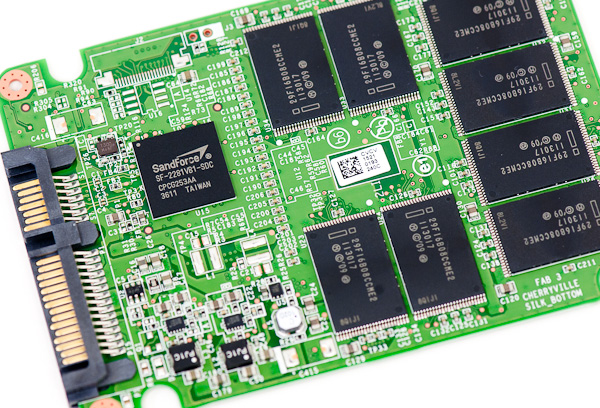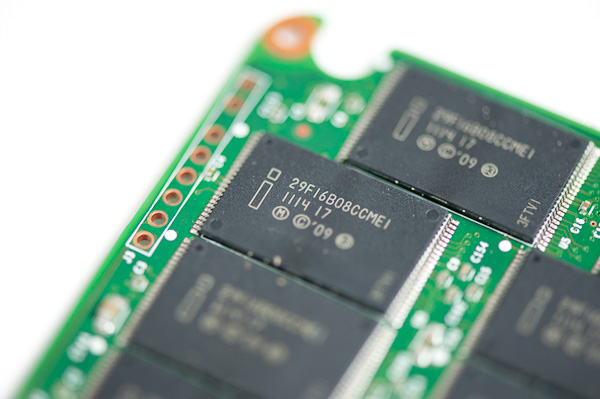A Look at Enterprise Performance of Intel SSDs
by Anand Lal Shimpi on February 8, 2012 6:36 PM EST- Posted in
- Storage
- IT Computing
- SSDs
- Intel
Final Words
The X25-E remains one of the fastest Intel SSDs in the enterprise despite being three generations old from a controller standpoint. The inherent advantages of SLC NAND are undeniable. Intel's SSD 520 regularly comes close to the X25-E in performance and easily surpasses it if you've got a 6Gbps interface. Over a 3Gbps interface, most of these drives end up performing very similarly.
We also showed a clear relationship between performance and drive capacity/spare area. Sizing your drive appropriately for your workload is extremely important for both client and enterprise SSD deployments. On the client side we've typically advocated keeping around 20% of your drive free at all times, but for enterprise workloads with high writes you should shoot for a larger amount. How much spare area obviously depends on your workload but if you do a lot of writing, definitely don't skimp on capacity.
What's most interesting to me is that although the 520 offers great performance, it didn't offer a tremendous advantage in endurance in our tests. Its endurance was in line with the SSD 320, if not a bit lower if we normalize to capacity. Granted this will likely vary depending on the workload, but don't assume that the 520 alone will bring you enterprise class endurance thanks to its lower write amplification.
This brings us to the final point. If endurance is a concern, there really is no replacement for the Intel SSD 710. Depending on the workload you get almost an order of magnitude improvement in drive longevity. You do pay for that endurance though. While an Intel SSD 320 performs similarly to the 710 in a number of areas, the 710 weighs in at around $6/GB compared to sub-$2/GB for the 320. If you can get by with the consumer drives, either the 320 or 520, they are a much better solution from a cost perspective.
Intel gives you the tools to figure out how much NAND endurance you actually need, the only trick is that you'll need to run your workload on an Intel SSD to figure that out first. It's a clever way to sell your drives. The good news is that if you're moving from a hard drive based setup you should be able to at least try out your workload on a small number of SSDs (maybe even one if your data isn't too large) before deciding on a final configuration. There are obviously software tools you can use to monitor writes but they won't give you an idea of write amplification.












55 Comments
View All Comments
Anand Lal Shimpi - Wednesday, February 8, 2012 - link
There's a *ton* of data that we manage. We run statistics, ad serving and forums all in house. Among other things, we can guarantee that no one funny is looking at the data we manage.Statistics are pretty beefy (they are one of our enterprise workloads after all) as we're tracking requests to all articles published. Couple a few hundred thousand readers per day with multiple article requests per reader and that's a lot of traffic to keep track of. Multiply all of that by a few ads per page and you can see where ad serving/tracking gets insane.
Then there are the forums. Repeat the same workload as above but across a different, but also quite large community.
The MS SQL server is main site, the My SQL server is forums + ads :)
Take care,
Anand
Lord 666 - Wednesday, February 8, 2012 - link
@Anand,What model server and what controller was it using with the qty 8 320 drives? Been waiting for an article like for this for some time.
Anand Lal Shimpi - Thursday, February 9, 2012 - link
The temporary hardware is a Dell R710 I believe. We're simply using Intel's Matrix RAID, no real need for a discrete PCIe RAID solution for what we're doing. I'll be providing more details about our final hardware configuration and how it compares to what we were running on for the past few years in the not too distant future.Take care,
Anand
mojobary - Thursday, February 9, 2012 - link
Hi,This is exactly the information I am interested in. I am a video editor, so my needs are typically long sequential reads. I would be interested in RAID adapters, iSCSI and Fibre channel RAID enclosures in respect to using SSDs. This is something that not much good information is present out in the wild. I have been researching this topic for about nine months and do not have conclusive information. Even from vendors which say "they support ssd", they don't list supported drives or even TRIM support. I typically like this site as it seems unbiased in the regard and usually helps me drive purchasing decisions.
bobbozzo - Monday, February 13, 2012 - link
HDDs are pretty good at sequential reads (and writes).For the same $, you'd be able to get more HDDs, and therefore higher sequential performance, than SSDs.
This will remain true until SSDs get MUCH faster sequential performance, or get MUCH cheaper than they currently are.
Movieman420 - Wednesday, February 8, 2012 - link
Given the 710's obvious benefit of using HET nand it'd be nice to see a comparison between it and an eMLC equipped Ocz SF2500 Deneva 2 drive. :evil grin:Anand Lal Shimpi - Thursday, February 9, 2012 - link
I'm trying to get more enterprise SSDs in house. I've got a bunch that I'm working on now actually. Not the Deneva 2 sadly :)Take care,
Anand
Sufo - Thursday, February 9, 2012 - link
How about the HP for ProLiant drives? Also, anything from Anobit?Is the 710 a realistic option for enterprise?
zepi - Wednesday, February 8, 2012 - link
I was hoping on some input regarding TRIM and SSD RAIDs in enterprise environments. What if I stick these babies to a proper raid-controller to run them in RAID 5? Or how about under other operating systems than Windows? Do the drives choke quickly if trim is not available or is it a non-issue? Does trim work in a software RAID array, assuming my operating system supports it? And how about trim / garbage collection behavior if the drives are never idle?Afaik Intel has released RAID 0- and RAID 1-compatible drivers that support trim, but only for Windows. Was that active in your test or does it even matter the slightest?
lonestar212 - Wednesday, February 8, 2012 - link
I was about ask exactly the same thing. Very curious about this!